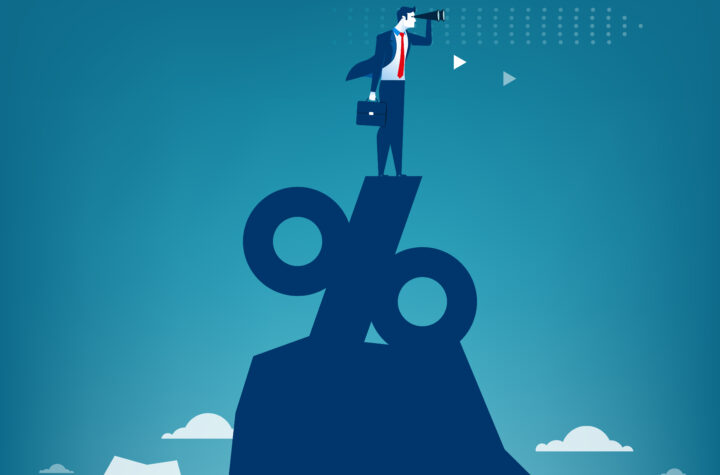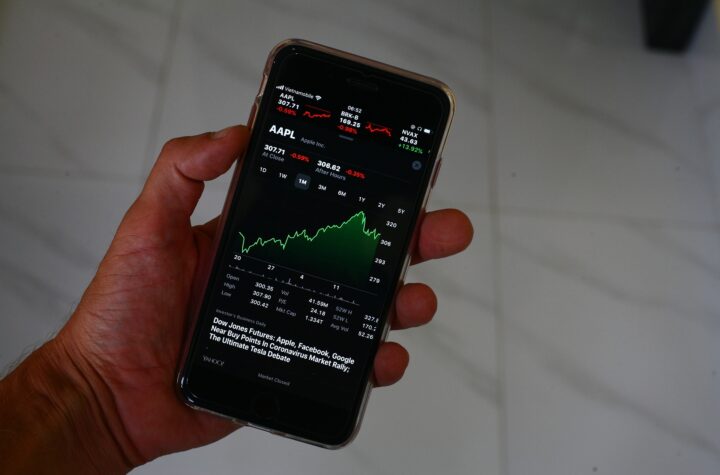There are a lot of ways that drugs get discovered. In fact, a shocking percentage of critical life saving drugs that we rely on today were pure accidents. Penicillin, a family of antibiotics that have saved countless millions of human lives, was discovered in a lab accident in 1928 when scientist Alexander Flemming noticed that bacteria that he was trying to cultivate in a petri dish just wouldn’t grow properly in the presence of a mold called penicillium. In the waning days of the 20th century, Pfizer’s scientists isolated a new chemical compound with high hopes for treating blood pressure and a common heart symptom known as Angina. In early clinical trials the new compound disappointed with regards to blood pressure, but somehow middle aged men in the trial suddenly felt a renewed sense of vigor in their manhood. That compound is Viagra, and the rest, as they say, is history.
Keeping such colorful tales in mind, most, if not all, major new pharmaceutical launches these days follow some version of the path that we are about to explore. Keep in mind that over the last twenty or so years, it has become very common for experimental compounds to change ownership several times before they are ever fully developed into saleable pharmaceutical product (we will touch on this later as we discuss our investment process). The journey can be arduous (10 years or more), painstaking (global clinical trials can involve thousands of patients), and most of all, expensive ( $2.5 billion dollars total for a new drug). 4.
Molecules frequently begin life in what we call the “preclinical” stage. This is usually the realm of truly raw scientific inquiry, without any obvious lucrative end. This is often seen as “science for science’s sake” and can be quite controversial. The controversy revolves around who should bare the cost of basic scientific inquiry, and who should reap the benefits if there are any. Many of these kinds of basic experiments are funded by the federal government, or by university endowments, or by private donations, or some combination of the three. However in today’s ruthless “quarter to quarter” Wall Street culture, most big pharmaceutical companies simply don’t budget for this kind of building block exploration.
For an example of this kind of basic science, I could point to a recent paper published by my friend, Dr. Bradley Schmier at Memorial Sloan Kettering Cancer Institute in New York. It is entitled, “Deletion of the rnl gene encoding a nick sealing RNA ligase sensitizes Deinococcus radiodurans to ionizing radiation. “ This paper was the result of years of careful work in a laboratory setting, and the findings were warmly received in the scientific community. Anyone would tell you that somehow this kind of knowledge will eventually help to cure disease. But no one could tell you exactly when or exactly how. Dr Schmier has helped the scientific community understand the basic mechanisms by which the human body function; but he didn’t single handedly whip up a cure for cancer in his lab. This is why the pharmaceutical pioneering process exists.
The three funding sources mentioned above combine to produce a dizzying quantity of research papers each year, and from this soup of thousands upon thousands of discoveries big and small, a pharmaceutical company selects target molecules to investigate. Notice that I used the phrase “a pharmaceutical company,” rather than “Big Pharma.” That is because in the early stages of discovery, many of these new compounds are pioneered by small, or even micro sized, pharmaceutical concerns; sometimes founded out of academic labs, sometimes founded out of garages. These small players risk it all in hopes of finding something promising; if they do find something (or if they can convince Big Pharma that they found something) these tiny minnows will be swallowed up by the big, fat old “King of the Reef” and Big Pharma will complete the more advanced science and marketing of the drug.
The early, pre-clinical days of a molecule are not spent in hospitals or doctors’ offices, but more often with experiments on bacteria, rats, or even monkeys. (Less and less monkeys these days due to advances in science and ethical concerns). In our modern age of wonders, a rat is now much more than just a rat. They are often genetically engineered to present common human problems in a controlled environment. Rats can be engineered to display high cholesterol, Alzheimer’s, and even depression! (If you are wondering what a depressed rat looks like, just type in “depressed rat” on Youtube and see what comes up. Basically it just sits around and doesn’t play any fun rat games anymore…..). The scientific literature is jam packed with some of the most outlandish and confirmed findings in rats. But any veteran scientist will tell you that a new drug compound that works in rats means……that the new drug compound works in rats. We do learn a lot from these experiments, but legions of human hearts have been broken by successful rat experiments that just could not be duplicated in humans.
If a compound shows some promise on animal or even computer models (monkeys are out, iMAC’s are in) then they may be selected to move to a PHASE 1 Trial. In order for a new pharmaceutical to be approved by the FDA, the compound must be shown to be “safe and efficacious.” Safe is a relative term; most drugs have side effects. The only question is: is the side effect worse than the condition that we are trying to treat? For example, old fashioned chemotherapy is notoriously toxic for patients to endure, but the FDA has decided that the potential benefits outweigh the potential risks. So, a PHASE 1 trial has nothing to do with efficacy and everything to do with simply establishing a relatively safe dose that won’t kill the small pool of brave test subjects who sign up for these trials. (I can’t tell you how they find volunteers…..but I do know that some people have been made desperate by the ravages of disease). Approximately 70% of molecules tested will make it to the next phase.5
If a team of researchers are able to establish a safe level of dosage for a new compound, then PHASE 2 trials often begin. These are relatively small trials designed to demonstrate efficacy in humans for the first time. Very often this is the first time that an agent will be tested against a PLACEBO. A PLACEBO is a pill that looks just like the real thing, but actually contains no medication. This helps establish a CONTROL GROUP, which you may remember from your grade school science days serves as a comparator to the group that gets the drug. Often, studies are designed to be “double blind” meaning that neither the investigator nor the study participant knows if they are getting a placebo or the real deal. The idea is to remove bias or psychosomatic effects. A phase 2 trial can last six months, a year, or much longer depending on the goals of the research. Phase 2 is where basic viability of a compound is established (or not) and this stage of research is littered with the broken dreams of both sick patients and disappointed pharmaceutical executives. (Only 33% of drugs tested in Phase 2 make it to the next phase). 6
If the new compound achieves its ENDPOINT, or performs as hoped, in Phase 2, then the compound may be invited to the big leagues, the final stage before a drug can be submitted to the FDA; Phase 3. It’s important to note that up until now this entire process is controlled and mandated by private businesses, and private investors; there are literally millions of compounds in clinical libraries around the world where the research process has been frozen at phase 1 or phase 2 for whatever reason; compounds advance only as pharmaceutical companies decide to make the investment, or not. This juncture between phase 2 and phase 3 is often where Big Pharma get’s involved….the big fat kingfish has smelled something tempting as it floats around its territory, and its ready to gobble up the little pharma company in hopes of finding the next global blockbuster. We will discuss this process more later in the chapter; sometimes these acquisitions are phenomenal for Big Pharma, sometimes they just burn cash.
A phase 3 trial is a major investment of time and treasure for some group of investors. Depending on circumstances and ongoing dialogue with the FDA, these trials can include thousands of patients scattered across different sites across the globe. They can last for months, or years, depending on the design of the trial, and they still often fail, sometimes spectacularly (only 27% of drugs are deemed successful in phase 3). Now we as investors start to understand why new drug research can come with a price tag that ends in 000,000,000.7
If the phase 3 trial meets its endpoint, then the Big Pharma company may submit all the accumulated data to our Uncle Sam for approval. As investors, we must remember, that the FDA evaluation committee is ONLY tasked with determining safety (or relative safety) and efficacy. The efficacy of a new drug is rarely compared vrs. new drugs of the same class, but rather against older therapies, or if there are not therapies, against nothing. There must be reasonable balance between safety and efficacy. For example, if a phase 3 study were done with three thousand patients, and only four or five patients experienced minor side effects, than the drug would only have to be mildly effective to become approved (very little risk, modest reward). However, if a phase 3 trial is conducted with three thousand patients, and one thousand of those patients become violently ill as a side effect, then the agent had really better be very effective against the target disease, or the FDA panel will decide that the new agent simply isn’t worth the risk. In the case of ORPHAN DRUGS, or rare diseases where no treatment exists at all, side effects could be pretty extreme, but since patients are desperate for any hope at all, the new molecule may be approved. This has become a favorite business tactic in the biotech world, which we will discuss in the next chapter.
Investors, stand up and take note!!! Just because a new molecule has successfully completed the odyssey from preclinical to FDA approved, it doesn’t necessarily make that new drug lucrative or a block buster. Financial results may have more to do with business acumen or naked luck than with clinical efficacy. I learned this myself the hard way, so that you won’t have to.
In another life, I was employed as a salesperson for a certain large, international pharmaceutical company. I sold insulin products to primary care physicians and endocrinologists. My “bag,” as we called our product portfolios, contained a brand new short acting insulin that management was sure would be there next gold mine. Short acting insulin is a kind of insulin that diabetics take around mealtime. With 29 million diabetic patients in the United States, corporate management crunched the math and figured that almost any effective new product on the market would have to sell like wildfire, and at a high price, since most diabetic patients cannot live without insulin. So my new mealtime insulin was launched into the market with high hopes.
This compound had survived the harsh journey outlined above, and received many millions in investment. The agent presented very few side effects, and in some aspects performed better than older, “classic” insulins on the market. So, the bar for FDA approval was low. (Few people harmed, little risk to approval, makes an approvable drug). But in their rush to get our new mealtime insulin approved, my bosses had forgotten to ask their clients if the drug would present value. You see, my new insulin was part of a wave of next generation insulins, ALL of which were better in some ways than the classic insulins, ALL of which were safe. But the other candidates made to the market first. Simply put, there was nothing wrong with my new mealtime insulin, but it wasn’t demonstrably better than what was already available, and it wasn’t any cheaper than the other new wave insulins, so doctors and insurers collectively shrugged their shoulders when our new product launched. Instead of being called the derisive term, “A me too drug,” our new insulin was labeled “a me three drug!” All that money, all that time and tears, down the drain due to poor commercial planning.
The moral of the story is: we like science, because we are investors in science, but we are investors, not just scientists. Even as a new drug progresses down the tortuous path towards FDA approval, we must look at the agent with both scientific eyes and business eyes. Sure it works, but does it work as a moneymaking proposition?







Never thought about the commercial competition of a brand new medication, just always ASSumed it was better because it was new. WRONG! Thanks for the education 🙂